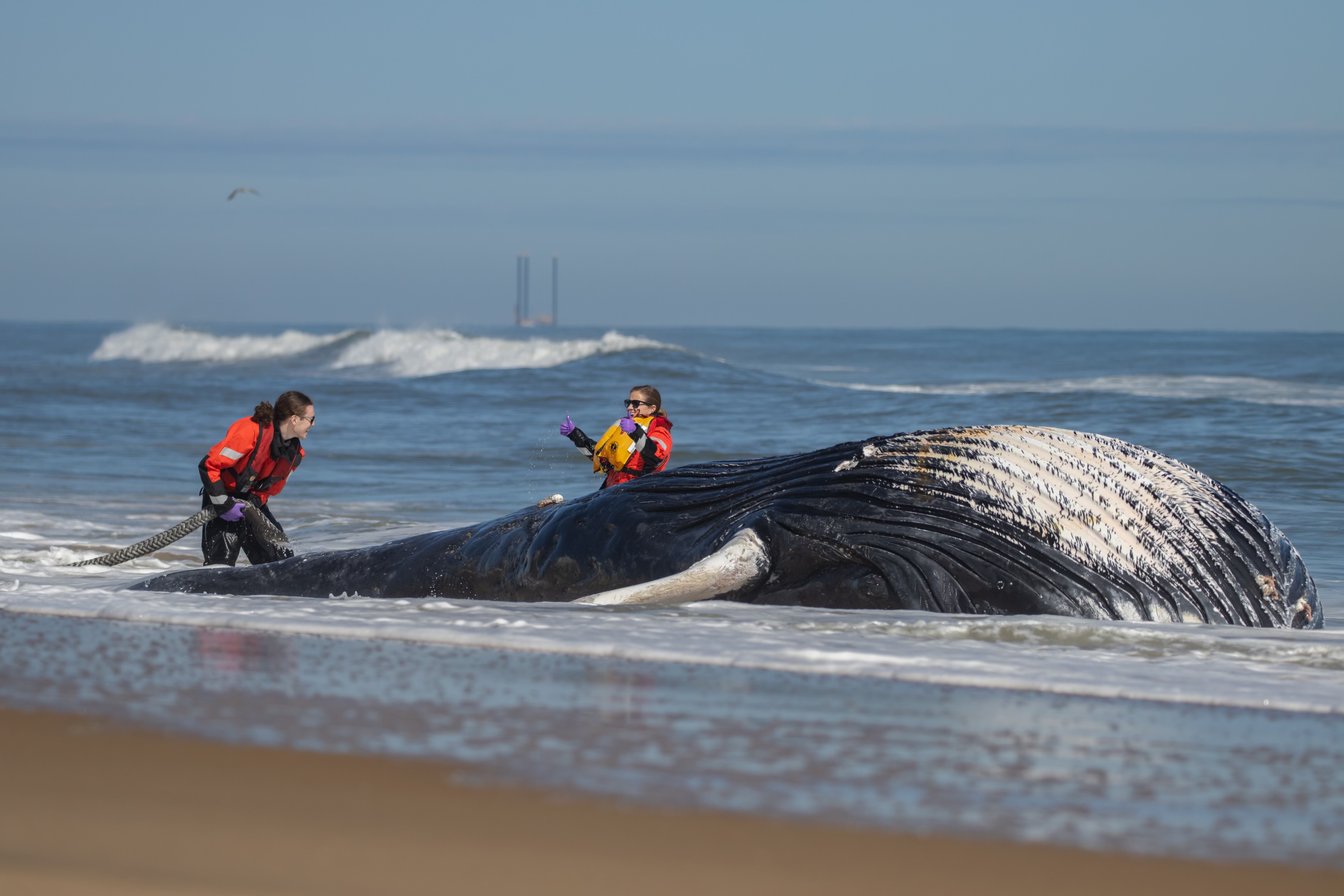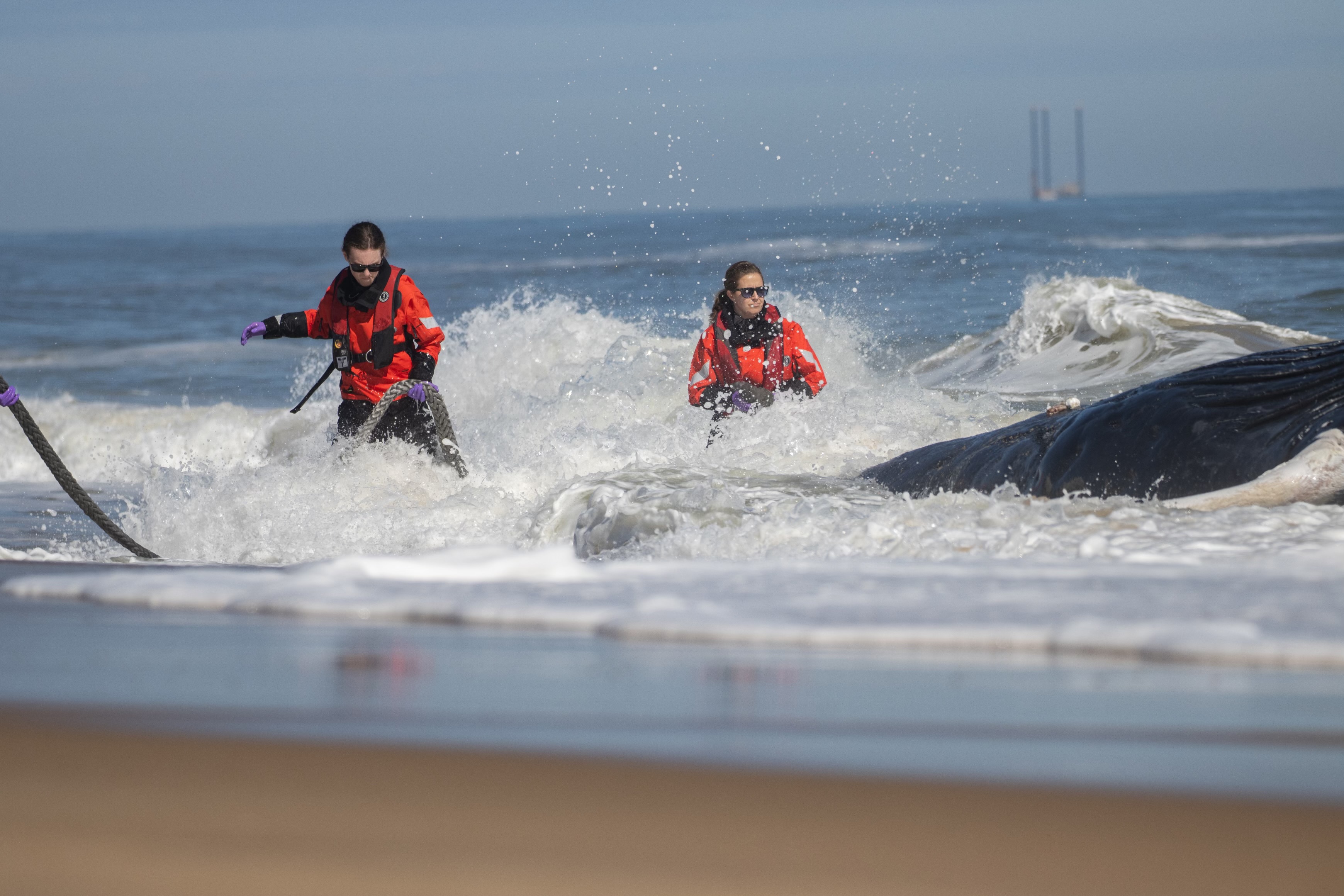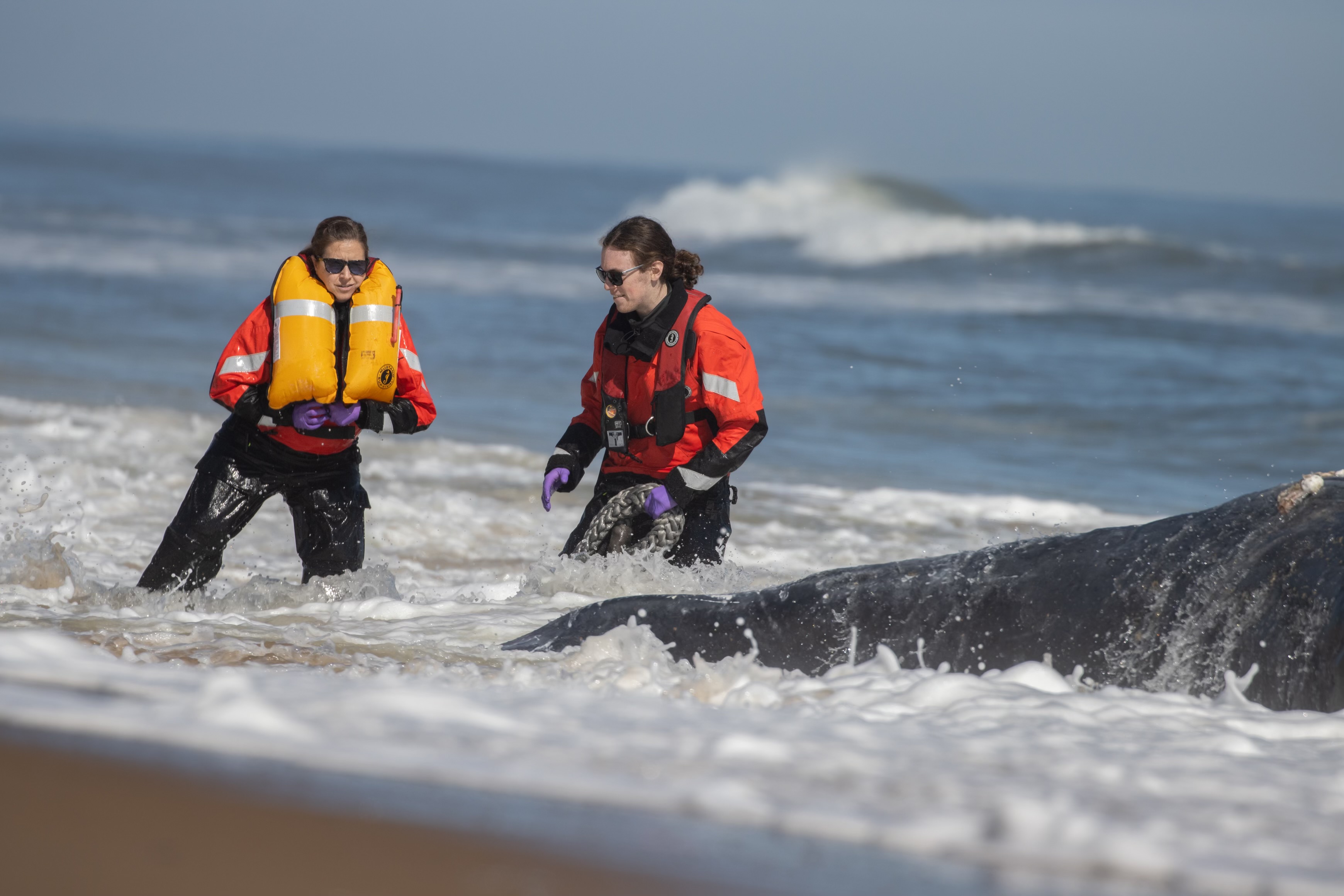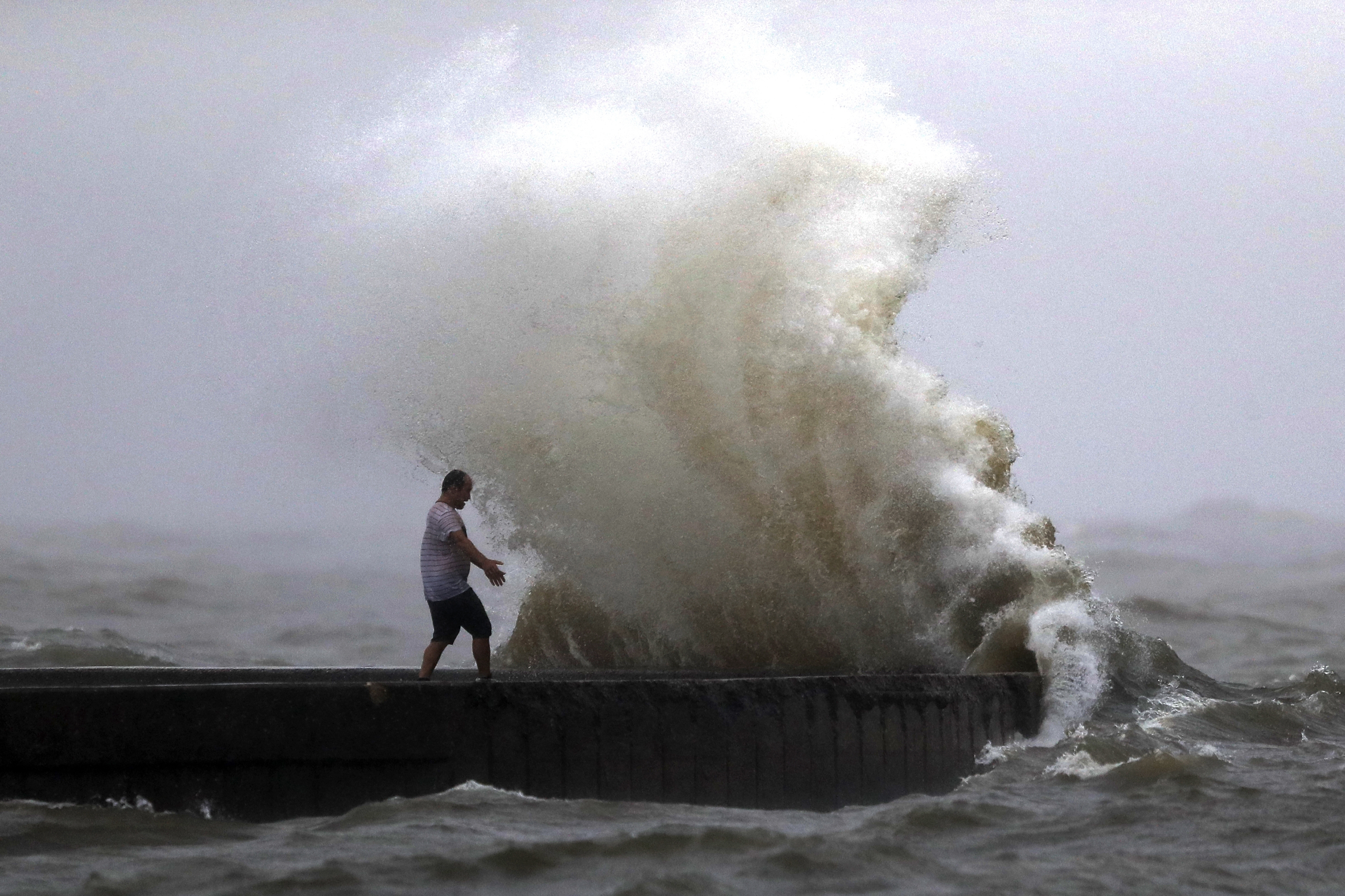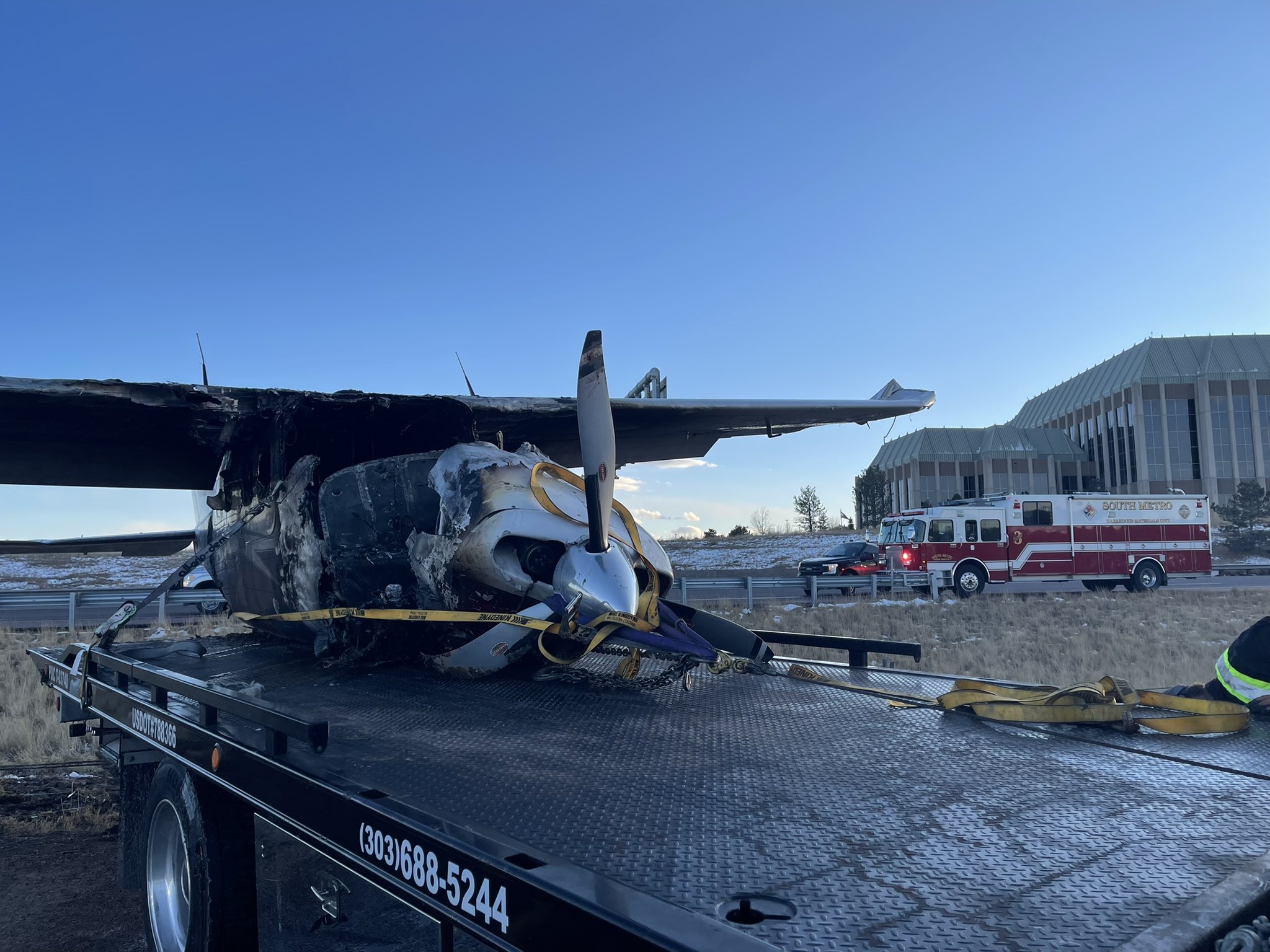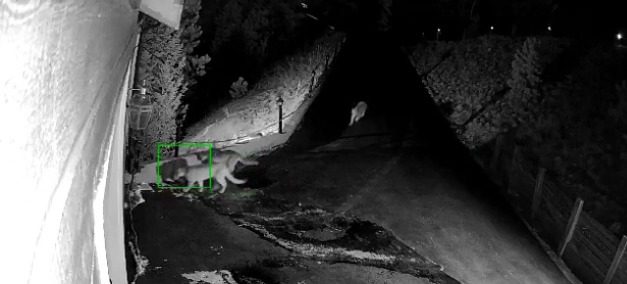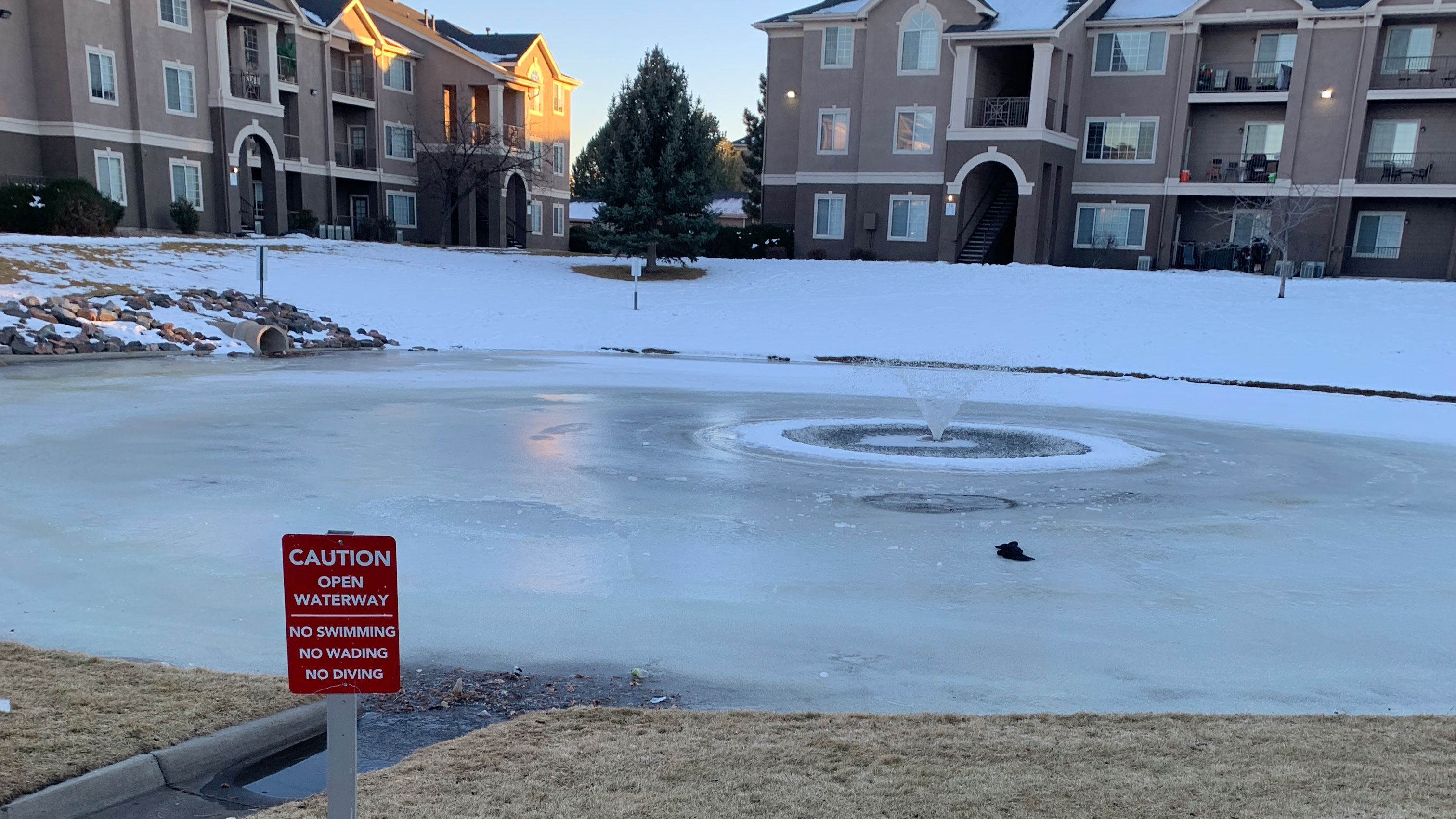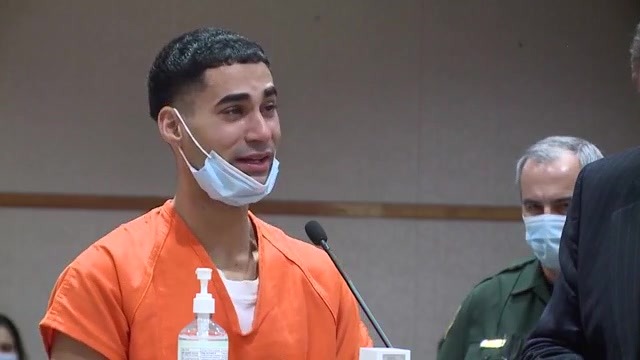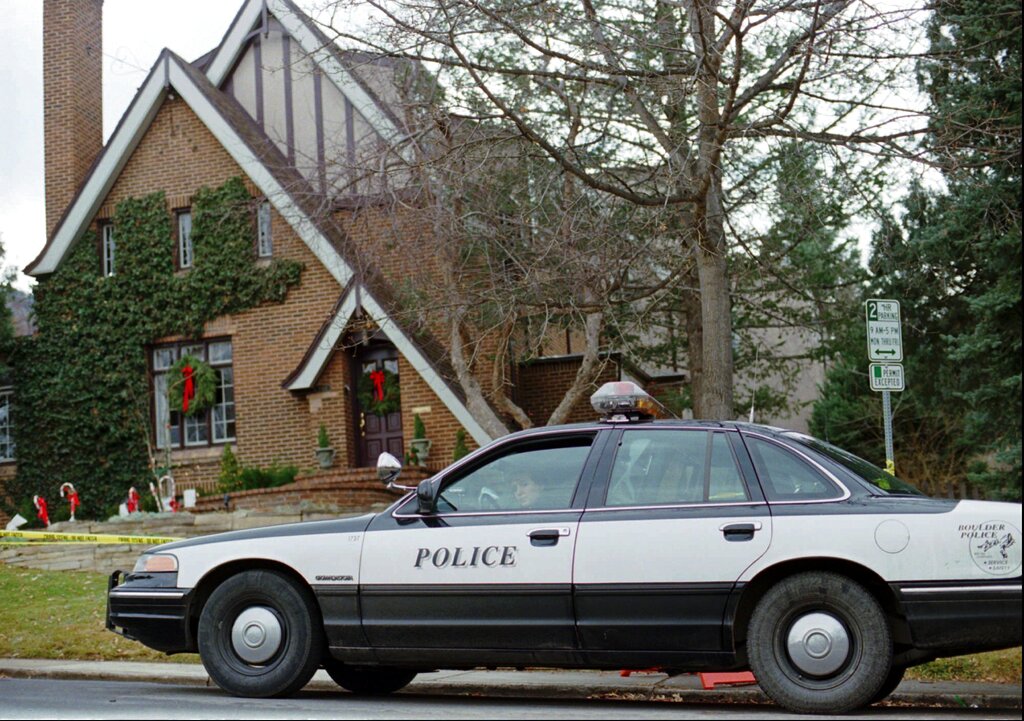VIRGINIA BEACH, Va. (WAVY) — The Virginia Aquarium Stranding Response team confirmed to WAVY Monday afternoon that two dead whales washed ashore in Virginia Beach.
First whale found on March 3 at Oceanfront
Virginia Beach police taped off the stretch of beach between 24th Street and 25th Street. The Virginia Aquarium’s Stranding Response team responded to the dead whale and moved it from the shorebreak to the beach to be monitored overnight.
Members of the stranding team returned to the site Monday to perform a necropsy and work to determine the cause of death.
Crowds of onlookers gathered around the stranded animal with cameras in hand to take pictures. However, the public was asked to keep a safe distance from whale and any gear used to move the whale.
Aisha and Terry Lindsay were standing downwind from it.
“It had a little smell to it,” Aisha Lindsay said.
Before beaching, the dead whale was first spotted Friday drifting in the Chesapeake Bay west of the fourth island of the Chesapeake Bay Bridge-Tunnel.
“I would love to know what happened and why it beached itself,” Aisha Lindsay said.
It was Saturday when the Virginia Aquarium Science Center stranding team began monitoring the dead whale as it drifted from the Chesapeake Bay to the Oceanfront. They, too, want to know why the whale died.
“This animal is about 32 feet in length and the estimated weight is about 32,000 pounds, so about 16 tons,” said Mark Swingle of the Virginia Aquarium and Science Center. That information was confirmed during the necropsy, which was completed by Monday evening.
Initially the Stranding Response Team does an external examination to see if there is any evidence that it has been entangled in netting or struck by a vessel. Mark Swingle is with the Virginia Aquarium and Marine Center Response team.
“Those are the two leading causes of death for large whales — being hit by a vessel or being entangled by fishing gear,” Swingle said.
Swingle said the necropsy involves a careful dissection and documentation of the dead whale to try to determine the cause of death.
“The first step they are going to do, they are going to peel the blubber of the animal back,” Swingle said. “If there is any blunt trauma underneath the blubber, you will see evidence of that. Then it is just a matter of just taking it apart.
They will look at each organ that is available and take samples, hoping to figure out not only how the how the young humpback died, but also, how it lived.
“We learn about the biology of the animal,” Swingle said. “Often, we can learn what it has been feeding on — what we know about diet and how old the animals are and their reproductive history and things like that.”
After the necropsy, the whale’s remains were buried in the sand, deep enough not to interfere with beach activity.
Second whale found on March 4 at Sandbridge
As the response team was wrapping up the necropsy on the whale found at the Virginia Beach Oceanfront, a second whale was reported to have washed up on the beach at False Cape Fear State Park, also in Virginia Beach.
Biologists will perform a necropsy on the animal. They did not specify what type of whale it is.
According to the Virginia Aquarium, all whales are protected by the Marine Mammal Protection Action, which makes touching these animals illegal.
Around this same time last year, WAVY covered the deaths of several whales in Virginia Beach.
A 20-year-old North Atlantic right whale washed ashore Feb. 12, 2023. A necropsy determined it died from blunt-force trauma, consistent with a vessel strike.
The week before, the aquarium response team assisted in bringing a dead humpback whale to shore in Virginia Beach, near First Landing State Park.
You can report a sick, injured, entangled, stranded or dead whale sighting to NOAA by calling 1-877-WHALE-HELP (866-942-5343.) There’s also a free Whale Alert App that allows you to see where whales have been spotted and add your own sighting. Download in the App Store or get it on Google Play.
Continue to check WAVY.com for updates.
